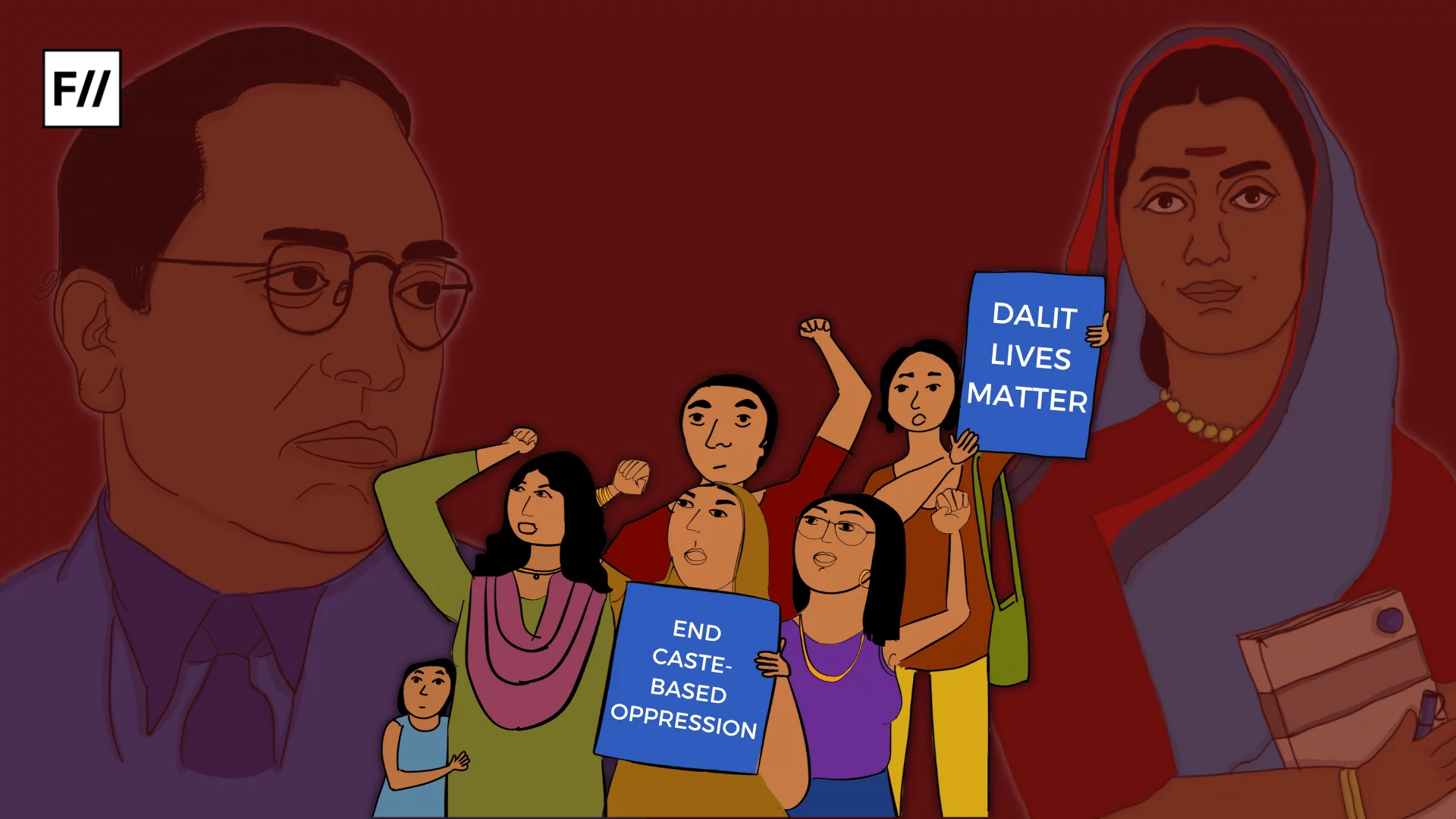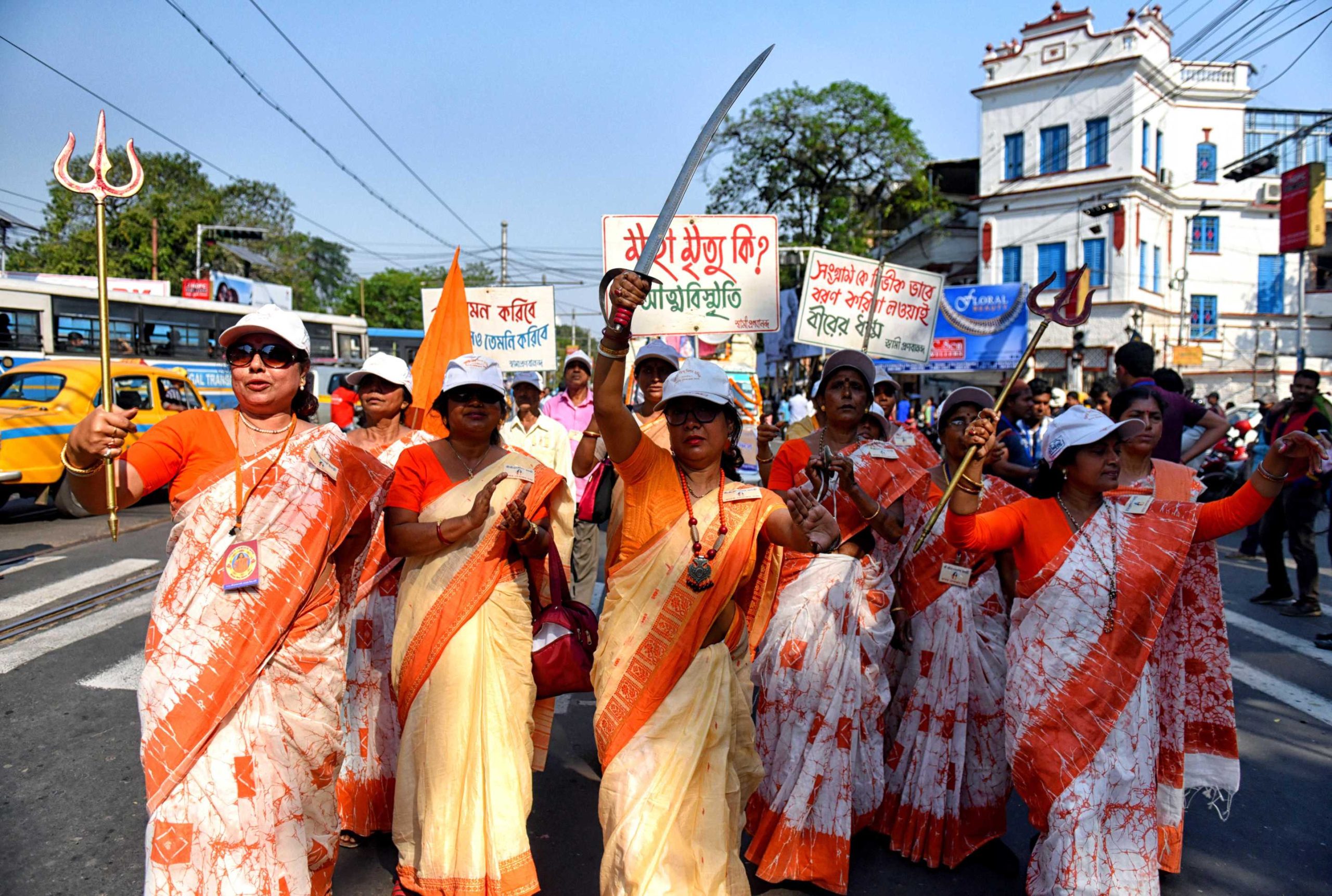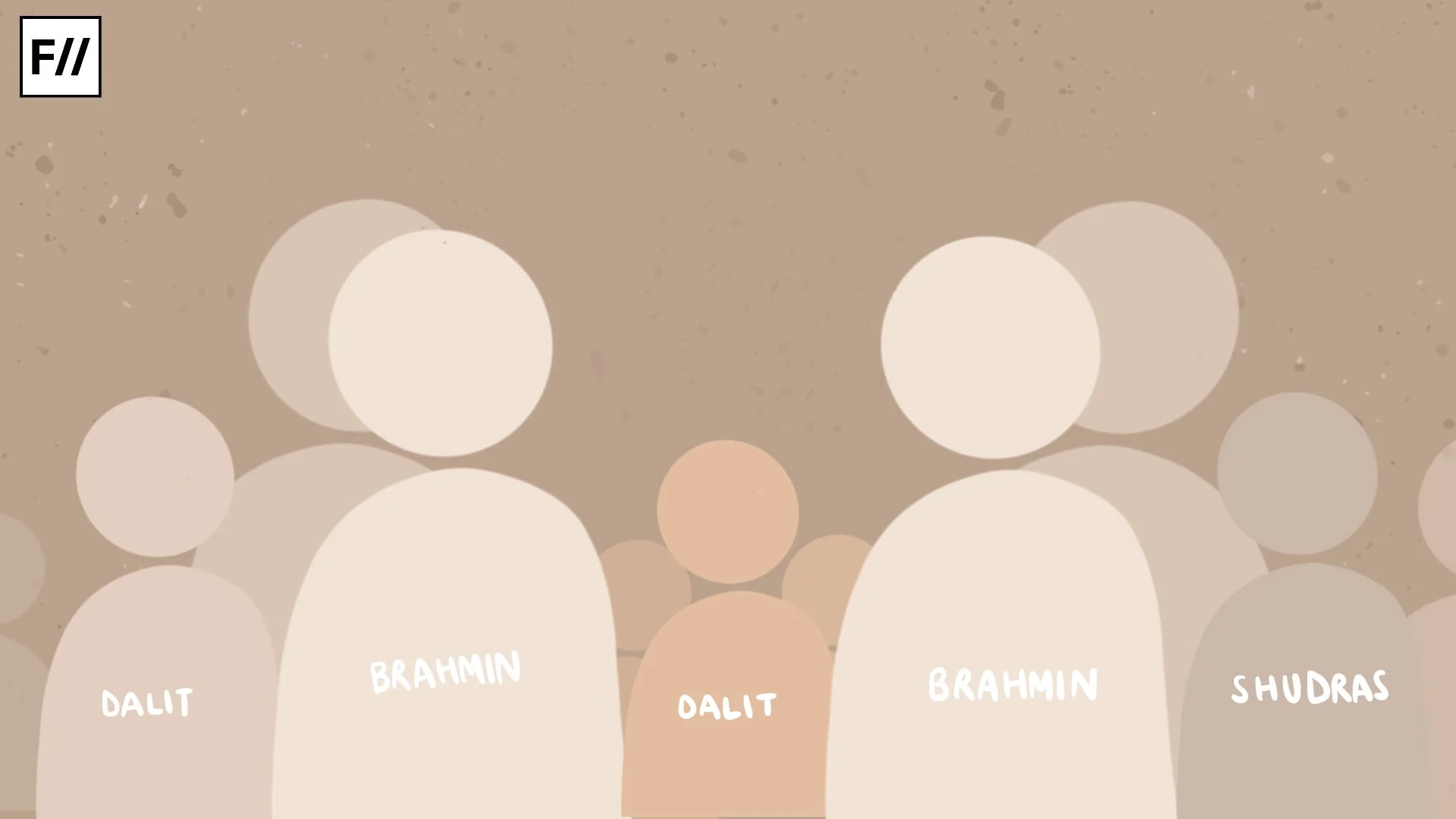In today’s era, memes have become an integral part of our everyday digital communication. They are in the form of stickers, GIFs, short videos, or clips of popular Bollywood/Hollywood movies and TV serial dialogues. It’s a new form of communication other than texts or messages that unites people through humour. And not only humour, but it is also used widely to express opinions, sentiments, and emotions. Memes carry their own meaning that is accepted in a culture of internet users.
When casteist humiliation is masked as humour
During one of my regular conversations, I opened the sticker section of my WhatsApp to search for some memes on “chup kar” (shut up) to share in conversation with my sister. Meanwhile, a sticker appeared that directly stated “chup chamar” (‘shut up, chamar‘), and following this, several such stickers and memes floated on the screen that used derogatory language targeting marginalised communities, which are actually casteist slurs being used in the form of memes.

There is a long history of using casteist slurs in casual conversations in India; it has become a common sight to see many young people using these slurs as an insult or “humour” without realising the casteist hate against the marginalised behind such uses. Words like “chamar” (skilled leather worker, a Dalit community), “Chori Chamari” (literally “stealinglike chamars”, dehumanises a whole Dalit community as thieves), “Bhangi”(a Dalit community historically engaged in cleaning work under the casteist Varna system), “Mehtar” (a Dalit community historically engaged as sweepers), “chamariya” (a casteist insult implied to dehumanise Dalit women) and “Arakshanjeevi” (living on reservation, implies unworthy) etc. are often used to insult someone, though in reality such slurs target the entire Dalit community and reveal a mindset of hate against the dalit communities in India’s Savarna-dominated social structure. Open uses of these derogatory casteist slurs not only display the deeply unjust social realities of our society but also show how a savarna-dominated structure still targets and spreads harmful and dehumanising narratives against the individuals belonging to the Bahujan Samaj. Such uses of caste based slurs try to reinstate the old Brahminical casteist imagery of the Dalit and Adivasi communities, dehumanising them as “incompetent, lesser, dishonest, and polluted”.
Anti-reservation memes and their impact
Now, such casteism dominates the online spaces, which is put out as “humour” but in reality is just dehumanisation of the marginalised communities. Many social media users casually use words like “chapari” in the form ofcasteist slurs for ‘someone who lacks taste and style in modern times’. The word chapari is not an abuse; it is an identity term traditionally used for the ‘Chaparband community of Maharashtra’. The prevalence of such words as a slur highlights the casteism inherent in society. When rapper MC Stan won Big Boss, this term erupted over all social media platforms, targeting MC Stan’s looks and behavior. Still, people continue to use it to mock someone’s background and lifestyle. Such incidents demonstrate how casteism is deeply rooted in our digital platforms, where old forms of hierarchies are being reused in the name of humour.
In the present time, several anti-reservation and anti-SC/ST Act memes and reels are being broadly shared on social media. Social media users, belonging to Sawarna castes, also use terms like ‘Arakshanjeevi’, ‘quota khane wale’, etc., to question the merit of the Dalits.
In the present time, several anti-reservation and anti-SC/ST Act memes and reels are being broadly shared on social media. Social media users also use terms like ‘Arakshanjeevi’, ‘quota khane wale’, etc., to question the merit of the Dalits. When people point their fingers at the merits of the Dalits, they ignore the long struggle and oppression of such communities for an equal treatment in society. These are new forms of humiliating Dalits and backward communities despite the constitutional safeguards of equality and dignity. This casteist propaganda and these savarna narratives around affirmative action have led in the past to serious consequences for dalit students. For example, two Dalit students had committed suicide in IIT Delhi due to facing caste-based discrimination, inside campus, against reserved category students. This is not a single incident; every year, Dalit students commit suicide or drop out from universities facing similar situations. This raises a serious question about the rampant rise of caste discrimination in the prestigious institutions of our country.
Legal gaps in addressing online caste discrimination: why the SC/ST Act does not address online hate against Dalits
As per International Dalit Solidarity Network, “Caste-hate speech is understood as any communication form, such as speech, writing, behaviors, codes, signs, or memes, that manifests hierarchies, invokes humiliation, serves to dehumanize, incites discrimination, degrades self-worth or perpetuates discrimination and is often the source of physical, mental, or material violence to a person or a group based on caste identity”. These speeches are extensively made via online means to criticize the reservation system and become a tool to humiliate Dalit and Adivasi communities. Such speeches often cite casteist slurs in the form of slogans, memes, stickers, etc.
In the context of criticism of reservation Bombay High court said – criticizing reservation on whatsapp is not caste discrimination and does not violate “The Scheduled Caste and the Scheduled Tribe (Prevention of Atrocity) Act, 1989” (SC/ST Act or Atrocity Act). Such decisions of the court only further the hate against affirmative action and do not help in stopping the serious problem of dropouts and suicides of Dalit students. In fact, comments against the reservation system often contain casteist overtones and hate against dalits. It is a vicious form of caste discrimination. It perpetuates casteist narratives and often results in harm against the marginalized and downtrodden communities.

WhatsApp often fails to monitor online caste bias through casteist memes, messages, and stickers. It is very common on platforms such as WhatsApp to see hate messages and memes on caste being circulated which include casteist slurs. In this scenario, when the Bombay high court ruling says such messages do not target individuals, it ignores the reality that these memes can be detrimental to the physical and mental well-being of a person from marginalised communities and can lead to violence against them.
The Telangana High Court also said that WhatsApp messages making any sort of criticism on reservation targeting the Dalit community do not attract the SC/ST Act, as they happen in closed walls, and violation of the SC/ST Act requires discrimination to occur at public places. If we follow this interpretation, then should these casteist messages, memes, and stickers using harmful language continue to be transmitted in private groups, which violates the dignity of the marginalised community? Just because they are being circulated on private platforms, such messages and memes cannot escape legal scrutiny. Circulation of casteist memes, messages, and stickers reinforces collective hate narratives around caste. It also raises questions on the WhatsApp user guidelines, which have not clearly prohibited the circulation and use of such caste-based content; thus WhatsApp fails to ensure the safety and wellbeing of the vulnerable communities and promote a dignified environment for everyone.
WhatsApp often fails to monitor online caste bias through casteist memes, messages, and stickers. It is very common on platforms such as WhatsApp to see hate messages and memes on caste being circulated which include casteist slurs.
Recently Madhya Pradesh High Court, in the case of Mukes Kumawat v. State of M.P., said that the word “chindi chor” used by a few journalists against a woman teacher who belongs to the scheduled caste community is a derogatory word rooted in a casteist setting. This word itself is an indicator of caste-based insult and thus falls under the SC/ST Act. The court also denied anticipatory bail to the accused who used the word “chindi chor” against a woman teacher. This is a significant ruling of the MP High Court, as it considers the use of a derogatory word as an offence under the SC/ST Act.
However, the same logic does not extend to online spaces. Dehumanising casteist uses of slurs such as “chamar”, “chapari”, and “neech” are prevalent in virtual spaces through messages, memes, stickers, and Gifs but remain unaddressed and escape legal scrutiny as they are not covered as an offence under the SC/ST Act. The Atrocity Act prohibits the use of words that indicate a direct derogatory remark on caste, yet words like “chapari” are not prohibited, leading to their continuous use, mainly by the young population active on social media platforms. This gap allows constant use of casteist slurs in the form of memes or stickers on WhatsApp, Instagram, Facebook, and other online platforms. This is an alarming concern that needs to be addressed by the judicial institutions and the legislature of our country. Caste hate speech should not be allowed to go unchecked.
Artificial intelligence tools and models can be transformative in combating casteist content like memes, which are masking casteism as humour. Platforms like WhatsApp can integrate such technologies to trace the casteist messages and memes through algorithms. These databases should be trained enough to moderate the harmful content that is rooted in casteism, racism and hate and dehumanises someone’s identity and dignity.
WhatsApp guidelines also need to be updated. WhatsApp user guidelines do not include an explicit prohibition of derogatory caste-based language inside its messages, memes, stickers, and GIFs. As Twitter introduced its first hate speech policy in 2017, it excluded ‘caste’ as a protected category. Later, it was included and officially recognised in 2020. Similarly, YouTube also updated its policy in 2019, which prevents hate speech that incites violence based on any factor, such as caste. Yet, WhatsApp did not include it in policies and guidelines to regulate content that targets community and class.
This Act is landmark legislation protecting the dignity and identity of marginalised communities. Yet, it only extends to cases of atrocity that are deemed fit as ‘discriminatory’ in the public view in public places. This act should expand its scope to caste discrimination in digital spaces. It should be updated to create a list of prohibitive words that are used to insult and humiliate Dalit and Adivasi communities.
About the author(s)
Surbhi Ahirwar is a second year law student at Dharmashastra National Law University, Jabalpur. She takes interest in constitution, human rights and marginalized communities rights





